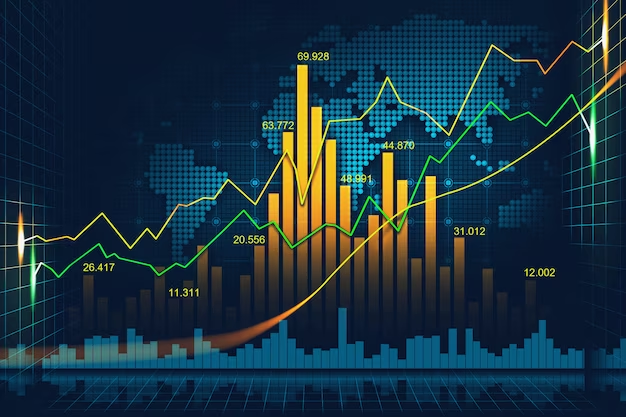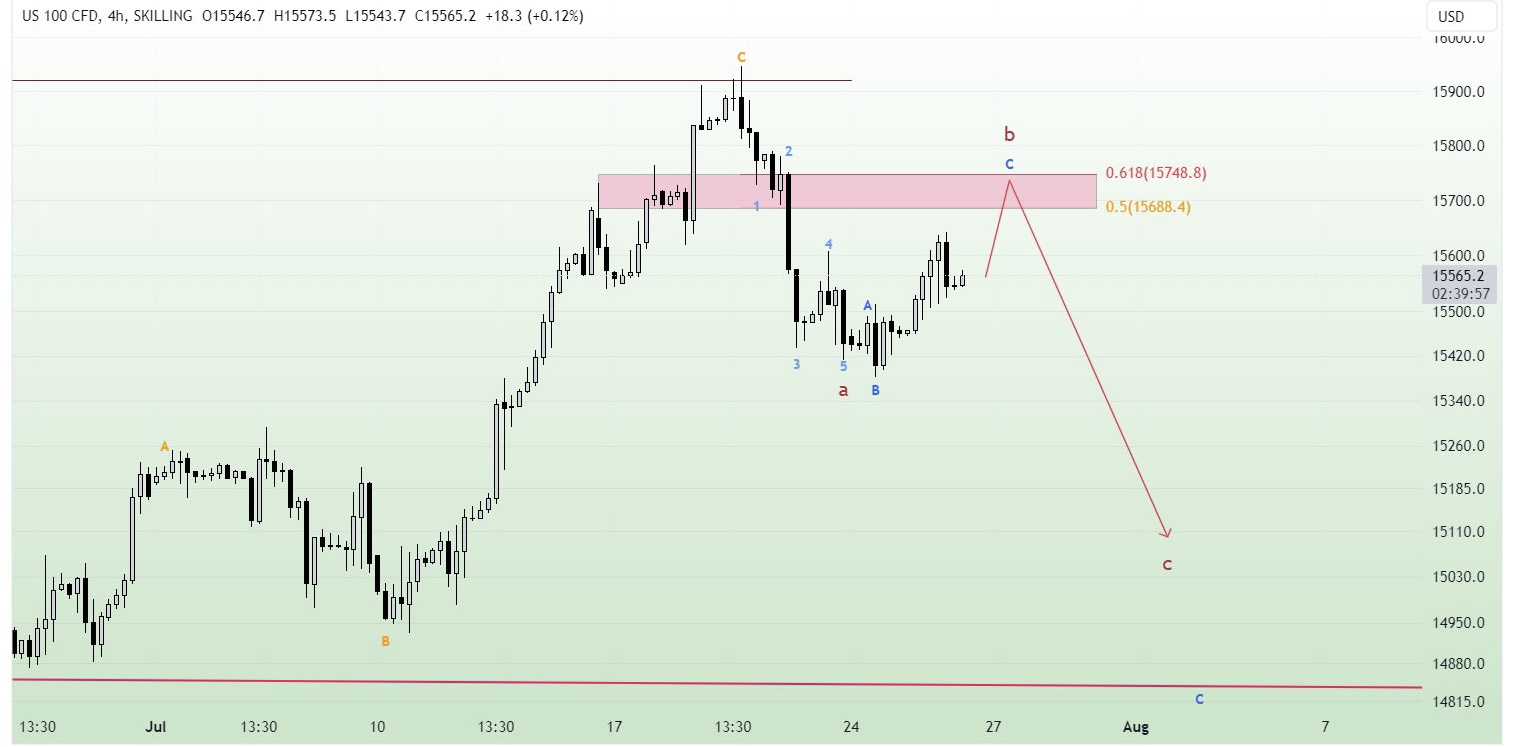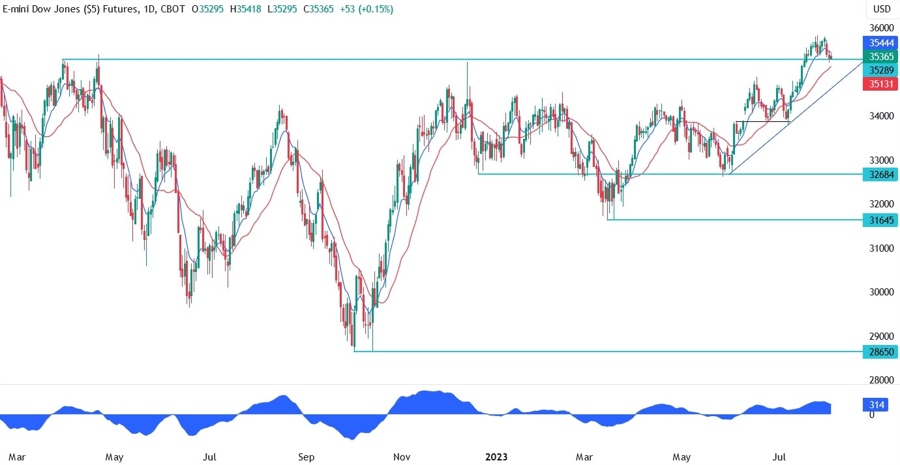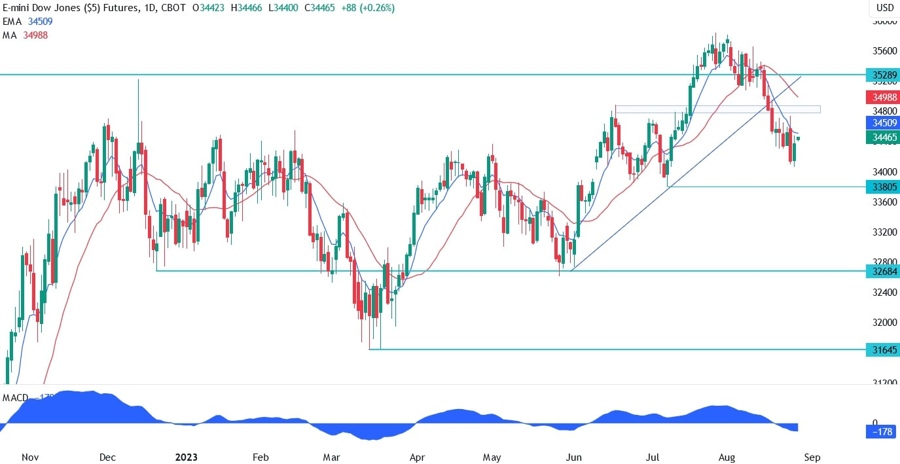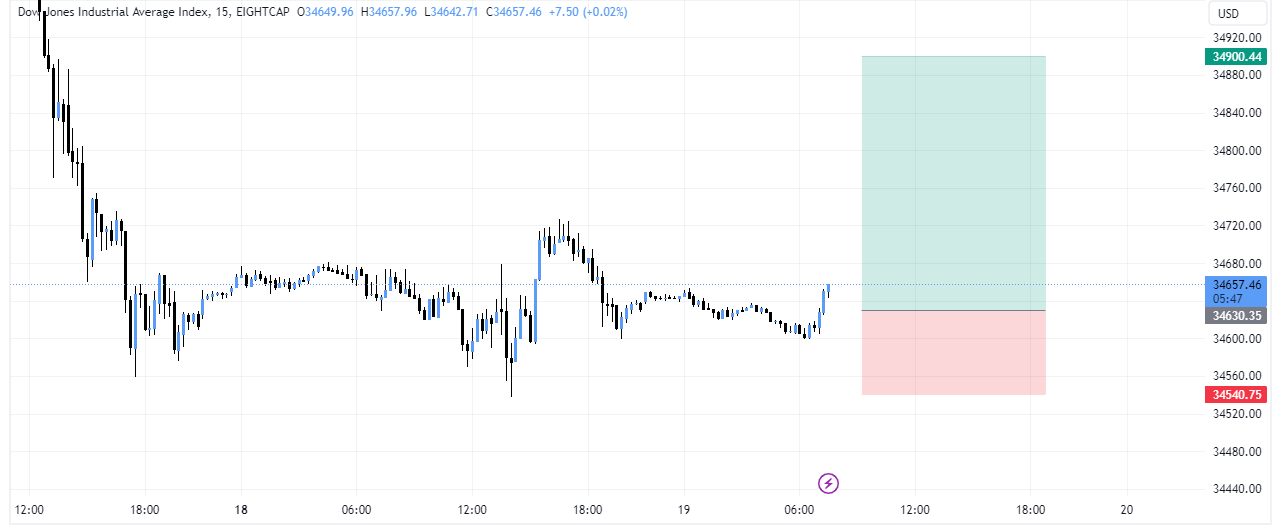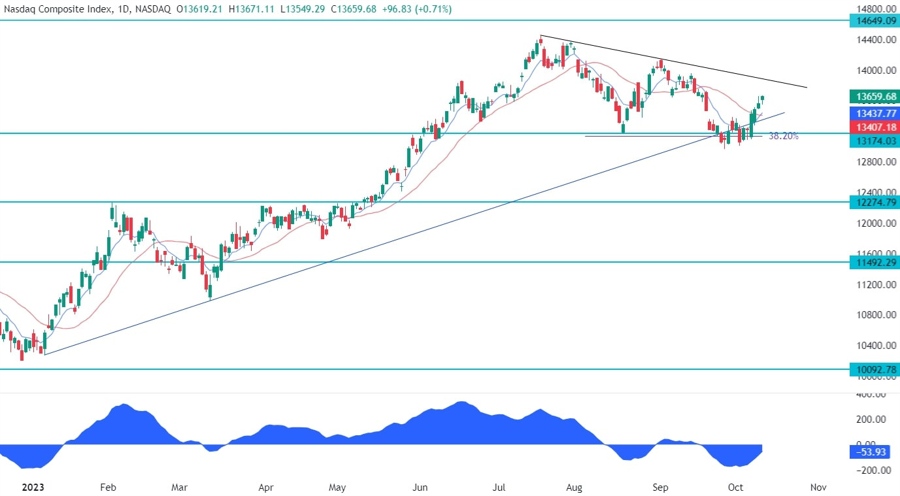CBOE Volatility Index (VIX)
Parent Index
NA
Indices informations
Listed Exchanges
Related Instuments
| S&P 500 VIX |
Sector Represented
Indices
- BSE SENSEX
- CAC 40
- CBOE NASDAQ-100 Volatility Index (VXN)
- CBOE Volatility Index (VIX)
- China50-FTSE China A50 Index
- DAX
- DAX PERFORMANCE-INDEX-GDAXI
- DE40-Germany 40 Index DAX
- Dollar Index USDX-DXY-DX-Dixie
- Dow Jones Industrial Average-DJIA
- EURO STOXX 50 SX5E
- FTSE 100 Index-UK100 Index
- Germany 30
- Hang Seng Index
- IBEX 35-Spain 35
- NASDAQ Composite
- NASDAQ-100
- Nikkei 225
- Russell 2000 Index
- S&P/ASX 200
- Singapore Blue Chip Index-STI
- Swiss Market Index (SMI) Switzerland Blue Chip Index
- TecDax Price Index
- TECHDE30-Germany Tech 30 Index
- US Tech 100 Index UT100
- US2000-US Small Cap 2000 Index
- US30-US Wall Street 30 Index
- US30M- US Wall Street 30 Index M
- US500-S&P 500 (GSPC, INX, SPX)
- US500-US SPX 500 Index
- US500M-S&P 500 Mini
- All Ordinaries
- Amsterdam Exchange Index AEX index
- ATX-Austrian Traded Index (ATX)
- BEL 20
- BELEX15
- BIRS
- BIST-Borsa Istanbul
- CROBEX
- EGX 30 Index Egypts Leading Stock Market Index
- FTSE All-Share Index
- FTSE Bursa Malaysia Index-KLCI Index
- FTSE MIB-FTSE MIB 40
- Índice Bursátil Caracas (IBC)
- Índice Bursátil de Capitalización-The General Index
- Indice de Precios y Cotizaciones
- KOSPI
- KSE 100 Index
- MDAX
- MERVAL
- MICEX-The MOEX Russia Index
- OBX Index
- OMX Copenhagen 20 (OMXC20)
- OMX Helsinki 25 (OMXH25)
- OMX Stockholm 30 (OMXS30)
- PSE Index (PSEi)
- PSI20-PSI-20
- S&P/NZX 50 Index
- S&P/TSX 60
- S&P/TSX Composite Index
- S&P/TSX Venture Composite Index
- SOFIX
- SSE Composite Index (上证综指) Shanghai Composite Index
- Straits Times Index (STI)
- SZSE Component Index (深证成指)
- TA-125 Tel Aviv 125 Index
- Taiwan Capitalization Weighted Stock Index (TAIEX)
- The Indice de Precio Selectivo de Acciones- IPC
- CBOE NASDAQ-100 BuyWrite Index (BXN)
- Hang Seng China H-Financials Index
- IBOVESPA-The Bovespa Index-Brazil Stock Exchange Index
- NASDAQ Financial-100
- SDAX – Small cap
- TecDAX
- aaa
- Amex Gold BUGS Index
- Amex Oil Index
- AScX index – Small cap
- ASE Weighted Index
- Athex 20
- Barrons 400 Index
- BELEXline
- BET-10
- BSE DCI
- BSE FCI
- BUMIX – Mid cap
- BUX – Large cap
- CA60-Canada 60 Index
- CAC All Share
- CAC All-Tradable
- CAC Large 60
- CAC Mid & Small
- CAC Mid 60
- CAC Next 20
- CAC Small
- Capital Markets Index
- CASPI
- CBOE DJIA BuyWrite Index (BXD)
- CBOE S&P 500 BuyWrite Index (BXM)
- CBV Index
- CBV Real Estate Index
- CECEEUR
- Central European Blue Chip Index – Regional large cap
- ChinaH-Hong Kong China H-shares Index
- COLCAP
- Colombo Stock Exchange Sector indices (CSE Sectors)
- CROBIS
- CSC X
- CSE 30
- CSE50
- CSI
- CSI 100 Index (中证100指数)
- CSI 300 Index (沪深300指数)
- Dow Jones Global Titans 50
- Dow Jones Transportation Average
- Dow Jones Utility Average
- DSE
- DSEX
- DSM200
- EGX 100 Index
- EGX 50 Index
- EGX 70 Index
- ERS10
- FIRS
- FT 30 Index
- FTSE 350 Index
- FTSE AIM All-Share Index
- FTSE AIM UK 50 Index
- FTSE All-World index series
- FTSE Fledgling Index
- FTSE Italia Mid Cap
- FTSE MID 250 Index
- FTSE SmallCap Index
- FTSE techMark Index
- FTSE/Athex Large Cap
- FTSE/JSE All Share Index
- FTSE/JSE Top 40 Index
- FTSEurofirst 300 Index
- FTSEurofirst Euro Supersector Indices
- GSE All-Share Index
- Hang Seng China Enterprises Index
- Hang Seng China-Affiliated Corporations Index
- HK50
- IDX Composite
- IGBC
- IPSA
- ISEQ 20-The Ireland Overall Stock Exchange Index-ISEQ20
- IT40-Italy 40 Index
- Jakarta Islamic Index (JII)
- Jamaica Stock Exchange (JSE)
- KASE
- KMI 30 Index
- KOSDAQ
- KSE All Share Index
- KSE-30 Index
- Kuala Lumpur Composite Index
- LASI
- LQ-45
- LuxX Index – Luxembourg Stock Exchange
- MADEX index
- Madrid Stock Exchange General Index
- MASI index
- MESDAQ
- MIDDE50-Germany Mid 50 Index
- MIDDE60-Germany Mid 60 Index
- Milanka Price Index (MPI)
- MSCI EAFE
- MSCI GCC
- MSCI Hong Kong Index
- MSCI World
- MSM-30
- NEPSE Index – Nepal Stock Exchange
- NETH25
- NIFTY 100 LOW VOLATILITY 30
- NIFTY 200
- NIFTY ALPHA 50
- NIFTY BANK
- NIFTY CPSE
- NIFTY ENERGY
- NIFTY FINANCE
- NIFTY FMCG
- NIFTY INDIA CONSUMPTION
- NIFTY INFRA
- NIFTY IT
- NIFTY MEDIA
- NIFTY METAL
- NIFTY MIDCAP 100
- NIFTY MIDCAP 50
- NIFTY MIDCAP LIQUID 15
- NIFTY MIDSMALLCAP 400
- NIFTY MNC
- NIFTY Next 50
- NIFTY PHARMA
- NIFTY PSE
- NIFTY PSU BANK
- NIFTY PVT BANK
- NIFTY REALTY
- NIFTY SERV SECTOR
- NIFTY SMALLCAP 100
- NIFTY SMALLCAP 250
- NIFTY SMALLCAP 50
- NIFTY100 EQUAL WEIGHT
- NIFTY100 LIQUID 15
- NIFTY200 QUALITY 30
- NIFTY50 EQUAL WEIGHT
- Nor25-Norway 25 Index
- NSE 30 Index
- NSE All Share Index
- NSE NIFTY 50
- NYSC Arca Major Market Index
- NYSE American Composite Index
- OMX Iceland 15 (discontinued)
- OMX Iceland 6
- OMX Stockholm PI (OMXSPI)
- OMX Vilnius (OMXV)
- OTCM QX ADR 30 Index
- Palisades Water Index (ZWI)
- PFTS index
- Philadelphia Gold and Silver Index
- PHLX Semiconductor Sector
- PSE All Shares Index
- PSE Financials Index
- PSE Mining and Oil Index
- PSI/GERAL
- PX Index
- RTS Index (RTSI)
- Russell 1000
- Russell 2500
- Russell 3000
- Russell MidCap
- Russell Small Cap Completeness
- S&P 100
- S&P 1500
- S&P Asia 50
- S&P BSE 500
- S&P Europe 350
- S&P Global 100
- S&P Global 1200
- S&P Latin America 40
- S&P MidCap 400
- S&P MidCap 400/BARRA Growth
- S&P MidCap 400/BARRA Value
- S&P SmallCap 600
- S&P SmallCap 600/BARRA Growth
- S&P SmallCap 600/BARRA Value
- S&P Vietnam 10 Index
- S&P/ASX 20
- S&P/ASX 300
- S&P/ASX 50
- SA40-South Africa 40 Index
- SBF 120
- SE30-Sweden 30 Index
- SET Index
- SET100 Index
- SET50 Index
- Slovak Share Index
- SMI Expanded
- SMI MID
- SPBLPGPT
- SSE 180 Index (上证180指数)
- SSE 50 Index (上证50指数)
- STOXX Europe 600
- SWI20-Switzerland 20 Index
- Swiss Leader Index (SLI)
- Swiss Performance Index (SPI)
- SZSE 100 Index (深证100指数)
- SZSE 200 Index (深证200指数)
- SZSE 300 Index (深证300指数)
- TA-35 Index
- TA-90
- Tadawul
- TEDPIX
- TEPIX
- The Global Dow
- The GSE Composite Index.
- THETAUSD Theta Network Token vs US Dollar
- TOPIX
- Trinidad and Tobago Stock Exchange (TTSE)
- UBS 100 Index
- Value Line Composite Index
- VN Index
- WIG-Warszawski Indeks Giełdowy
- WIG30
- Wilshire 4500
- Wilshire 5000
- Zimbabwe Industrial Index
- Zimbabwe Mining Index
The Evolution of the VIX
The VIX, also known as the CBOE Volatility Index, is a popular measure of market volatility and investor sentiment. It is often referred to as the “fear gauge” of the stock market. In this article, we will explore the evolution of the VIX and its significance in the financial world.
Introduction
The VIX was introduced by the Chicago Board Options Exchange (CBOE) in 1993 to provide investors with a metric to gauge market volatility. It is calculated based on the prices of options on the S&P 500 index, which is a broad representation of the U.S. equity market.
Early Years
In its early years, the VIX was primarily used by professional traders and hedge funds to manage their portfolios and assess market risk. It quickly gained popularity among market participants due to its effectiveness in predicting market downturns and major price movements.
During this period, the VIX witnessed some significant spikes, particularly during periods of financial crises or geopolitical uncertainties. For example, the VIX surged to an all-time high during the dot-com bubble burst in 2000 and reached another peak during the 2008 global financial crisis.
Increased Accessibility
As technology advanced and financial markets became more accessible to individual investors, the demand for VIX-based products grew. This led to the creation of exchange-traded products (ETPs) that track the VIX, such as VIX futures and options.
These VIX ETPs allowed retail investors to gain exposure to market volatility without directly trading options themselves. The increased accessibility of these products further fueled the popularity and understanding of the VIX among a wider range of market participants.
Controversies and Criticisms
Despite its usefulness as a volatility indicator, the VIX has not been without its controversies and criticisms. Some argue that it can be manipulated by large market participants, leading to inaccurate readings of market sentiment.
Additionally, during periods of extreme market stress, the VIX may not accurately reflect the true level of fear or volatility. This was evident in early 2020 when the VIX briefly spiked amidst the COVID-19 pandemic but failed to capture the full extent of the market turmoil.
Modern Applications
Today, the VIX is widely used by traders, investors, and analysts for various purposes. It helps measure risk, determine options prices, and guide investment strategies. Additionally, the VIX serves as a hedging tool for portfolio managers who seek to protect against market downturns.
Furthermore, the VIX has become an important benchmark for global financial markets. Its movements are closely watched by market participants around the world as an indicator of overall market sentiment and potential future price movements.
Conclusion
The evolution of the VIX has transformed it from a niche volatility index to a crucial tool in the investment landscape. Its ability to capture market sentiment and predict major market moves has made it an indispensable asset for both institutional and retail investors.
While the VIX has faced controversies and criticisms, its widespread use and popularity continue to grow. As financial markets evolve, the VIX will likely remain a key metric in understanding and navigating market volatility.
VIX Overview
The Volatility Index, commonly known as the VIX, is a widely used measure of market volatility and investor sentiment. It is often referred to as the “fear gauge” due to its ability to reflect market expectations for future volatility. Developed by the Chicago Board Options Exchange (CBOE), the VIX provides valuable insights into the level of fear or complacency in the financial markets.
The VIX is calculated using options prices on the S&P 500 Index, which is one of the most widely followed stock market indices globally. It measures the expected volatility over the next 30 days, with higher values indicating greater anticipated market turbulence and uncertainty. Conversely, lower VIX levels suggest calmer market conditions and lower expectations for future volatility.
Investors and traders utilize the VIX in various ways. Some use it as a tool for market timing, where higher VIX readings might signal potential buying opportunities during market downturns. Others may use it as a hedging instrument, incorporating VIX futures or options to protect their portfolios against market volatility. Additionally, the VIX can also serve as an indicator of market sentiment, helping investors gauge overall market confidence.
It’s important to note that the VIX is not directly investable, meaning you cannot buy or sell it like a stock or ETF. Instead, investors can gain exposure to the VIX through derivative products such as VIX futures, options, or exchange-traded products (ETPs) designed to track its movements.
Due to its role as a barometer for market volatility, the VIX has become an essential tool for financial professionals, traders, and investors alike. Its real-time updates provide crucial information about market conditions, helping individuals make informed decisions and manage risk effectively.
Conclusion
What VIX Measures: A Comprehensive Guide
The Volatility Index, commonly referred to as VIX, is a measure of market sentiment and volatility in the financial markets. Introduced by the Chicago Board Options Exchange (CBOE) in 1993, it has become an essential tool for investors and traders to gauge the level of fear or complacency in the market.
Understanding Volatility
Before diving into what VIX measures, it’s crucial to comprehend the concept of volatility. In simple terms, volatility refers to the magnitude of price fluctuations in a particular security, index, or market. Higher volatility indicates larger price swings, while lower volatility suggests relatively stable prices.
Volatile markets are often characterized by rapid and unpredictable price movements, which can lead to significant gains or losses for investors. On the other hand, calmer markets tend to have more stable and predictable price patterns.
The Role of VIX
VIX measures the expected volatility of the S&P 500 index over the next 30 days. It uses options prices on the S&P 500 to calculate anticipated market volatility. The index is derived from the implied volatility of various options contracts, representing investors’ expectations and perceptions of future market movements.
VIX is sometimes referred to as the “fear gauge” due to its ability to reflect market participants’ anxiety or fear of potential downside risk. When VIX values are high, it suggests increased uncertainty and nervousness among investors. Conversely, low VIX values indicate a higher degree of market confidence and complacency.
VIX values are expressed in percentage terms and represent the annualized expected volatility. For instance, a VIX level of 20 implies an anticipated annualized volatility of 20% over the next 30 days.
Interpreting VIX Levels
The interpretation of VIX levels largely depends on the context and historical averages. Here are a few key points to consider:
- Low VIX (below 20): When VIX values remain low, it suggests that investors have relatively little concern about potential market fluctuations. This could be an indication of market stability or complacency.
- Moderate VIX (between 20 and 30): VIX values within this range indicate some level of uncertainty and caution among investors. It signifies a balanced market sentiment, neither excessively fearful nor overly optimistic.
- High VIX (above 30): A spike in VIX values generally implies heightened fear or panic in the markets. It often accompanies periods of increased volatility, such as during economic downturns, geopolitical tensions, or major market sell-offs.
Uses of VIX
VIX has several practical applications for investors and traders:
- Hedging: VIX options and futures allow market participants to hedge against adverse market movements. Investors can use VIX derivatives to protect their portfolios from potential volatility.
- Market Timing: Some traders use VIX as a timing tool. They might consider entering the market when VIX is low and exit or reduce exposure when VIX reaches higher levels, indicating increased risk.
- Contrarian Indicator: Extreme VIX readings can act as contrarian indicators. When VIX is extremely high, it may suggest a buying opportunity, as excessive fear among investors can lead to oversold conditions.
It’s important to note that VIX primarily measures expected short-term volatility and does not predict specific market directions. It should be used in conjunction with other technical and fundamental analysis tools for comprehensive market assessment.
Conclusion
VIX plays a vital role in assessing market sentiment and expected volatility levels. As an investor or trader, understanding what VIX measures can provide valuable insights into the overall state of the market. By monitoring VIX levels, one can navigate the ever-changing financial landscape more effectively and make informed investment decisions.
The VIX, or Volatility Index, is a key metric that reflects market expectations for future volatility. It is widely used by investors and traders to gauge market sentiment, identify potential buying opportunities, or hedge against volatility. Although it cannot be directly invested in, derivative products tied to the VIX offer exposure to its movements. As an important indicator of market conditions, the VIX provides valuable insights for making informed investment decisions and managing risk in today’s dynamic financial markets.
The VIX Formula: Understanding the Volatility Index
The Volatility Index, also known as the VIX, is a popular measure of market volatility and investor sentiment. It is often referred to as the “fear index” as it provides valuable insights into market expectations and potential risks. In this article, we will explore the VIX formula and how it is calculated.
What is the VIX?
The VIX was introduced by the Chicago Board Options Exchange (CBOE) in 1993 as a way to gauge market volatility. It measures the expected 30-day volatility for the S&P 500 Index, which represents the overall performance of the US stock market. The VIX is derived from option prices and reflects investors’ expectations of future market fluctuations.
The VIX Formula:
The VIX is calculated using a complex formula that involves a series of steps. Here is an overview of the VIX formula:
- Gather the prices of listed options on the S&P 500 Index with at least 23 days left until expiration.
- Select a range of call and put options that are near the current price of the S&P 500 Index.
- For each selected option, calculate its implied volatility using an options pricing model such as the Black-Scholes model.
- Average the implied volatilities from step 3 to obtain the “implied volatility index”.
- Apply a weighting scheme to the implied volatilities based on their maturities and other factors.
- Normalize the weighted implied volatilities to a constant maturity of 30 days to obtain the final VIX value.
The VIX value represents the annualized expected percentage change in the S&P 500 Index over the next 30 days. A higher VIX indicates higher expected volatility, reflecting increased uncertainty or fear in the market. Conversely, a lower VIX suggests lower expected volatility and potentially greater market stability.
Interpreting the VIX:
The VIX is commonly used as a barometer for market sentiment. It can be interpreted in the following ways:
- A VIX below 20: Indicates low market volatility and relatively calm conditions.
- A VIX between 20 and 30: Suggests moderate market volatility with potential uncertainty.
- A VIX above 30: Reflects high market volatility and increased investor fear.
Traders and investors often use the VIX as a tool to assess market risk and make informed decisions. It helps them gauge whether to adopt more defensive strategies during times of heightened volatility or take advantage of potential opportunities when volatility subsides.
Conclusion:
The VIX formula provides a quantitative measure of market volatility based on option prices. By understanding the VIX and its calculation methodology, investors can gain insights into market expectations and adjust their investment strategies accordingly. The VIX serves as an important tool for risk management and decision-making in the financial markets.
How Does the CBOE Volatility Index (VIX) Work?
The CBOE Volatility Index, commonly known as VIX, is a popular measure of market volatility. It is often referred to as the “fear gauge” because it provides investors and traders with an indication of market sentiment and expected price fluctuations. Created by the Chicago Board Options Exchange (CBOE) in 1993, the VIX has become an essential tool for understanding market dynamics.
The VIX uses options prices to calculate expected volatility over the next 30 days in the S&P 500 index. It measures the implied volatility, or the market’s expectation of future price swings, rather than the historical volatility. The index is derived from a range of at-the-money put and call options on the S&P 500. These options represent expectations of both upward and downward movements in the stock market.
To understand how the VIX works, it’s important to know that options are financial instruments that give investors the right but not the obligation to buy or sell an asset at a predetermined price within a specific time frame. Investors use options to hedge against potential losses or speculate on market movements.
The VIX is calculated using a complex formula that takes into account the prices of various S&P 500 options. It involves a weighted average of these options prices, with closer-to-expiry options carrying more weight. The resulting number represents the market’s expected volatility percentage on an annualized basis.
When the VIX is low, it suggests that investors expect little market volatility and anticipate stability in stock prices. Conversely, when the VIX is high, it indicates that investors anticipate significant price fluctuations and perceive higher levels of risk.
The VIX is often used as an indicator of investor sentiment and can be interpreted in different ways. Some traders use it as a contrarian indicator, meaning they take the opposite position of the prevailing market sentiment. For example, if the VIX is high, indicating fear and uncertainty in the market, contrarian traders might consider buying stocks as they believe the market is oversold.
Investors and traders can access the VIX through various financial platforms or directly from the CBOE website. It is quoted in percentage points and reflects the market’s expectation of volatility over the next 30 days.
In summary, the CBOE Volatility Index (VIX) measures expected market volatility based on options prices for the S&P 500 index. It provides investors with valuable insights into market sentiment and helps them assess the level of risk in the market. By understanding the VIX, traders can make more informed decisions and manage their portfolios effectively.
Why is the VIX Important?
The Volatility Index, commonly known as the VIX, is an important tool in the world of finance. It measures the market’s expectation of volatility over the next 30 days, providing investors and traders with valuable insights into market sentiment and risk assessment. The significance of the VIX lies in its ability to gauge market volatility, which can greatly impact investment decisions and portfolio management strategies.
1. Market Sentiment
The VIX serves as a barometer of investor sentiment and reflects the level of fear or complacency prevailing in the market. When the VIX is low, it indicates that investors are relatively confident and expect smooth market conditions. On the other hand, a high VIX suggests increased fear and uncertainty, indicating potential market turbulence. Monitoring the VIX allows investors to assess the general mood of the market and make informed decisions based on prevailing sentiment.
2. Risk Management
Investment decisions inherently involve risk, and understanding market volatility is crucial for effective risk management. The VIX provides an estimation of the expected fluctuations in stock prices, helping investors evaluate their exposure to potential losses. By incorporating the VIX into risk models, investors can adjust their portfolios accordingly, diversify assets, or hedge positions to mitigate potential risks during periods of heightened volatility.
3. Trading Strategies
Traders and speculators actively use the VIX to develop trading strategies and capture opportunities arising from market volatility. High VIX levels often coincide with increased options premiums, making it attractive for traders to engage in option strategies such as straddles or strangles. Conversely, low volatility environments may prompt traders to sell options or employ volatility-based strategies like the carry trade. Understanding the VIX helps traders identify potential profit opportunities across various market conditions.
4. Market Timing
The VIX can also be used as a tool for market timing, helping investors determine the optimal entry or exit points in the market. Extreme readings on the VIX often precede market turning points. For instance, when the VIX reaches extremely low levels, it may signal an overextended bull market, indicating a potential correction or reversal. Conversely, a sharp spike in the VIX may suggest panic selling or an oversold market, presenting buying opportunities for contrarian investors.
5. Portfolio Hedging
Investors use the VIX as a tool for portfolio hedging to protect against adverse market movements. By purchasing VIX-related products like options or exchange-traded funds (ETFs), investors can offset potential losses in their portfolios during times of market stress. The VIX serves as an insurance policy against extreme market events, allowing investors to mitigate downside risk and preserve capital.
In conclusion, the VIX provides invaluable insights into market sentiment, risk assessment, trading strategies, market timing, and portfolio management. Monitoring the VIX allows investors and traders to make informed decisions, manage risk effectively, and navigate the ever-changing dynamics of financial markets.
VIX Key Data: Understanding the Fear Gauge of the Stock Market
The VIX, also known as the Volatility Index, is a popular measure used by investors to gauge the level of fear or uncertainty in the stock market. It provides valuable insights into market sentiment and helps traders make informed decisions.
Here are some key data points that every investor should be familiar with when analyzing the VIX:
1. What is VIX?
The VIX is a real-time index calculated using the prices of options on the S&P 500 index. It measures the market’s expectation of volatility over the next 30 days. When the VIX is low, it indicates low volatility, suggesting that investors are complacent. Conversely, a high VIX suggests increased uncertainty and potential market turbulence.
2. VIX Formula and Calculation
The VIX is derived from the prices of put and call options on the S&P 500 index. The formula uses a complex algorithm to calculate the implied volatility based on these option prices. The resulting figure is expressed as a percentage, representing the annualized expected volatility.
3. Historical Range of VIX
The VIX has a historical range, which can help investors assess the current level of fear in the market. On average, the VIX tends to hover around 20. However, during periods of economic uncertainty or financial crises, the VIX can spike significantly higher. For example, during the 2008 financial crisis, the VIX reached an all-time high of around 80.
4. Contrarian Indicator
The VIX is often referred to as a contrarian indicator. When the VIX is soaring, it usually indicates extreme fear in the market, which can be a sign of a potential market bottom. Conversely, when the VIX is at very low levels, it may indicate investor complacency and a potential market top.
5. Relationship with Stock Market
There is an inverse relationship between the VIX and the stock market. When the VIX rises, stock prices tend to decline, as investors become more risk-averse. Conversely, when the VIX falls, it usually coincides with rising stock prices. This interplay makes the VIX a valuable tool for assessing market sentiment.
6. Trading VIX
Investors can trade the VIX directly through futures contracts or exchange-traded products (ETPs) that track its performance. However, trading the VIX can be complex and highly volatile. It requires a deep understanding of options and derivatives, making it suitable for experienced traders and investors.
In conclusion, the VIX provides critical insights into market sentiment and helps investors assess the level of fear or uncertainty in the stock market. By monitoring key data points related to the VIX, investors can make informed decisions and adjust their investment strategies accordingly.
VIX: An Indicator of Expected Market Volatility
When it comes to investing in the stock market, understanding and managing risk is crucial. One key tool that investors use to gauge market volatility and assess potential risks is the Volatility Index, commonly known as VIX.
What is VIX?
The VIX is a real-time market index created by the Chicago Board Options Exchange (CBOE) that measures the expected volatility of the S&P 500 index over the next 30 days. It represents the market’s expectation of volatility based on the prices of options contracts on the S&P 500. As such, it is often referred to as the “fear gauge” or “fear index.”
How is VIX Calculated?
The calculation of VIX involves several complex steps. Essentially, it measures the premiums paid for S&P 500 options, which reflect the market participants’ expectations of future price swings. The higher the expected volatility, the higher the VIX level.
Interpreting VIX Levels
Understanding VIX levels is vital for investors as it can provide insights into market sentiment and potential risks. Here are some general guidelines:
- A low VIX reading (below 20) suggests that the market expects relatively lower volatility and indicates a calm or complacent market environment.
- A moderate VIX reading (between 20 and 30) implies increased uncertainty and a slightly higher level of market fear.
- A high VIX reading (above 30) indicates significant market turbulence and heightened fear, often associated with market downturns or increased volatility.
Usefulness of VIX
VIX can be a valuable tool for investors in several ways:
- Risk Management: Investors can use VIX as an indicator to assess the potential risk exposure of their portfolios. Higher VIX levels may prompt them to adjust their positions or implement hedging strategies.
- Contrarian Investing: Some investors believe that extreme VIX levels can present opportunities for contrarian investing. Extraordinary spikes in VIX may suggest market overselling, potentially leading to buying opportunities.
- Market Timing: Traders and speculators often use VIX to time their entries and exits into the market. For example, they may wait for VIX to reach certain levels before making significant trading decisions.
Limitations of VIX
While VIX is a widely used and recognized volatility index, it is important to acknowledge its limitations:
- VIX only represents expected volatility over the next 30 days, so it may not capture longer-term trends or events beyond this timeframe.
- VIX is calculated based on options prices, which can sometimes be influenced by factors other than pure market volatility, such as supply and demand dynamics in the options market.
- VIX primarily focuses on the S&P 500, so it might not fully reflect the volatility of other market segments or individual stocks.
In conclusion, VIX serves as an essential tool for investors to assess and monitor expected market volatility. While it has its limitations, understanding VIX levels can provide valuable insights for risk management, contrarian investing, and market timing. Remember, making informed decisions based on a comprehensive analysis of various indicators is key to successful investing.
Fundamental Summary
- Coming soon!!


